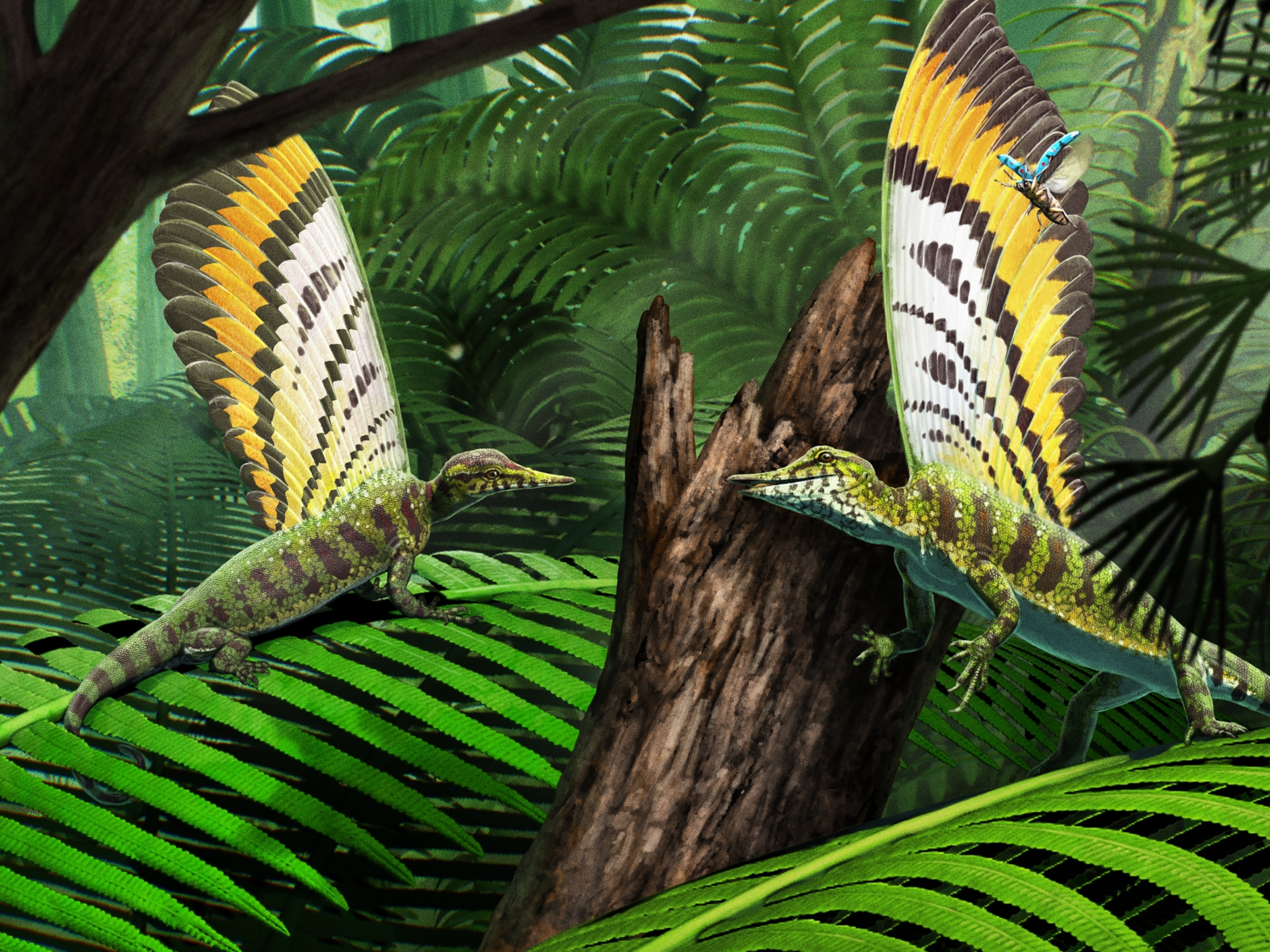
These Worms Are Like Feather Dusters With Eyes
Fan worms have everything from simple light detectors to complex compound eyes—but why?
Fan worms look more like feather dusters than animals. If you come across one while swimming in the ocean, all you’ll see is a beautiful spray of feathery tentacles, sprouting from a rock. These extend from around the creature’s hidden mouth, and they filter specks of food from the surrounding water. If you get too close, they’ll suddenly retract, pulling back into the protective tube that houses the animal’s more typical wormlike body.
The tentacles can do that because they have eyes. They’re like living feather dusters whose mouths can see you coming.
The simplest animal eyes consist of light-sensitive cells, partnered with a dark pigment. These give their owners a one-pixel sense of the world—not enough to qualify as true vision but enough to detect sources of light or shade. If these simple light detectors cluster in groups, they can provide their owners with information about light coming in from different directions, offering them a true, multipixel image of the world. The compound eyes of insects work in this way.
As I wrote in my National Geographic feature, “Simple eyes should not be seen as just stepping-stones along a path toward greater complexity. Those that exist today are tailored to the needs of their users. To understand how eyes evolved, scientists need to do more than examine their structures—they need [to] understand how animals use their eyes.”
For the fan worms, sight is all about defense. These creatures live stationary lives, sitting within their protective tubes and snagging floating particles of food from the water. Unlike related worms, they aren’t active predators, so they have no need for sharp eyesight. They just need to know if their bodies are inside their tubes, and if danger is approaching.
But despite these simple needs, they have evolved an astonishing range of eyes, which span the entire gamut from simple light detectors to complex compound eyes. That’s why Michael Bok from the University of Lund describes them as “nature’s eye factories.”
Most species have the basic one-pixel light detectors, or ocelli, on their heads, where you’d expect eyes to sit. These are too simple for true vision, and besides, they’re buried within the head, which is itself buried inside a tube. The worms probably use them to measure ambient light levels or tune their body clocks. They also have ocelli along their trunks and at the tips of their tails, which might warn them if they’ve somehow left their tubes and exposed their bodies.
The worms have also evolved ocelli on their crown of feathery tentacles, which look like dustings of orange pollen. These probably act as burglar alarms. They can’t see objects per se, but they can detect moving shadows, and so tell the worms when to withdraw their only vulnerable body parts.
Simple ocelli are good enough for that purpose, so it’s unclear why some fan worms have united these light detectors into true compound eyes. They’re astonishing to see, as if someone had grafted a fly’s eyes onto a flower. They’re also very diverse.
Within a single genus—Megalomma—some species have many small compound eyes on the tip of each tentacle, while others just have two very big ones. “You can see the benefits of both,” says Bok. The bigger eyes provide their owners with a sharper view of the world, but “they are riskier. If you get those nipped off, you’re blind.”
He suspects the balance of benefit and risk depends on the worms’ environments. “Maybe some species are in more interesting visual environments and they need a more sophisticated visual system to filter things out,” he says. “Animals in boring environments can get away with a simple shadow detector.”
Having described the dazzling variety of fan worm eyes, Bok now wants to study how they’re wired to the brain. Those in the feathery crown don’t seem to link up to the typical visual centers, so it seems that in evolving eyes in weird places, the worms also had to evolve new neural circuits from scratch. By understanding those circuits, Bok might get some clues about how the simplest eyes came to be.





